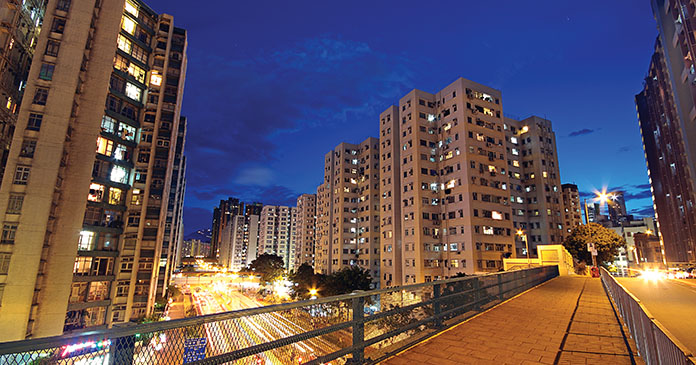The citizens of Seattle have just such an opportunity by encouraging development of dynamic pedestrian-friendly neighborhoods in the areas surrounding Sound Transit’s light-rail stations. Nationally, these “new” neighborhoods are called transit-oriented developments (TODs). Locally, the Seattle Planning Commission has coined the phrase “transit communities.”
In either case, the intent is to leverage the strong synergies between housing, shopping, socializing, affordability and mobility.
Area residents approved light-rail with the hope of providing a long-term alternative to automobile commuting and congestion. The installation of the several billion dollar infrastructure also allows the region to foster the type of development that improves the quality of daily life. To do so requires taking a fresh look at the zoning surrounding the light-rail stations.
Ditching the car
A driving force for the need to rezone is the realization among urban planners that the affordability model for housing has to include transportation. This is because the cost of moving to and from work by car consumes such a large percentage of an individual’s annual budget: typically $5,000 to $7,500 per year. By eliminating the need to own a car, that same individual has that much more money to apply toward more desirably located housing, or for other purposes such as further education or savings.
Affordability remains an important component in local urban planning. The relative high cost of purchasing a home in the Seattle area makes our region one of the comparably more affordable for renting. But, the cost of renting remains a challenge for many area tenants, especially in the urban core.
Urban planners have also learned that to create a successful neighborhood it takes a combination of land, transportation and infrastructure planning; locally appropriate development standards; and a robust community engagement program.
Local architect and urban planner David Cutler offers, “We’ve known for millennia how to design public places that feel comfortable to pedestrians. Connected, compact and complete communities are nothing new. Just think of your favorite pre-industrial city’s vibrant and tight-knit urban fabric.
“But since the advent of the automobile, especially here in the U.S., we seem to have collectively forgotten that our cities are for people,” said Cutler, who serves as vice chair of the Seattle Planning Commission and his firm, GGLO, has spearheaded the design of redevelopment projects along the entire West Coast. “Now, many are rediscovering that fact and developers and cities are taking notice. The behavior of buildings and streets affects our behavior, too.”
Of particular importance is the quality and granularity of street fronts: the impression that comes from the doors and windows and the presence of multiple active uses that create “eyes on the street.” People derive a sense of security from the presence of others on the street and from the shelter and spatial enclosure that buildings provide. We like to go where others go, and urban rooms often make for great public places.
Height limits are hurdles
Current zoning height restrictions limit the ability to create a fully successful neighborhood and can create imperfect projects. In many instances zoning around the light-rail stations is restricted to either 40 or 65 feet. Such limitations disrupt design and function. Instead of absolute height, number of stories would constitute a more effective measurement, allowing engineering and the market to drive the product.
Now, development is often compromised with ceiling heights shortened to comply with the artificially driven height restrictions. This is especially true at the ground level, where the retail ceiling height is what gets compromised-a residual after subtracting out the height of the housing floors above. This directly contradicts the desire to create vibrant street edges and viable retail.
Urban planners have figured out how to make TODs work from extensive study of domestic and international projects. What we now need is for the city of Seattle to implement those elements through zoning changes, with support from the surrounding neighborhoods.
Fortunately, the city land planners are encouraging higher density within our transit communities. But, development economics and the city’s design review and permitting processes do not always align, with the result of nothing being built. Perhaps the city in this instance will be able to recognize that its policies for affordability can also be achieved by supporting communities that help eliminate the need for expensive vehicle ownership.
Historically, many local neighborhoods have balked at density increases, largely due to the perception that density begets traffic and unsightly projects.
But, what we have learned from model projects around the world is that density—when done in conjunction with transit, pedestrian and bicycle mobility improvements, open space and contextual mixeduse rezones—provides more people with convenient access to life’s essentials and creates resilient places where people love to live. Density benefits neighborhood business districts by providing more residents and patrons within walking distance, improves local traffic by reducing vehicle miles traveled, and works to lower the city’s overall carbon emissions.
The transit community concept is a good one. The city should reach out to the neighborhoods to explain the objectives and the benefit to the community and to learn how transit can best fit into their neighborhoods. The outreach should also extend to a wide spectrum of those within the neighborhoods. To be successful, no plan should be presented without first encouraging community input.
Transit communities provide a significant opportunity to enhance neighborhood livability through the development of well thought mixed-use projects. In this time of scarce resources, cities can leverage the significant investment in transit to improve neighborhood resiliency, increase the tax base and provide a stable future for all its citizens. Let’s not miss the opportunity.
Author: Frank Bosl, Senior Vice President of the Multi-Housing Properties Group















